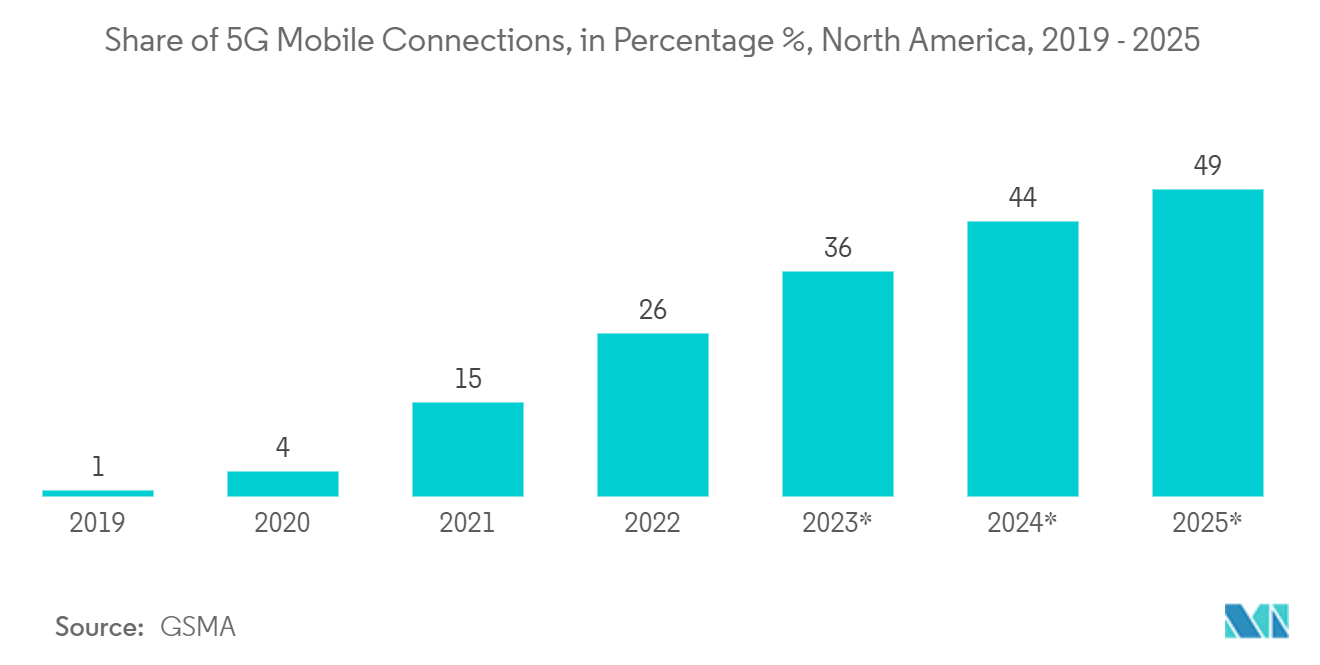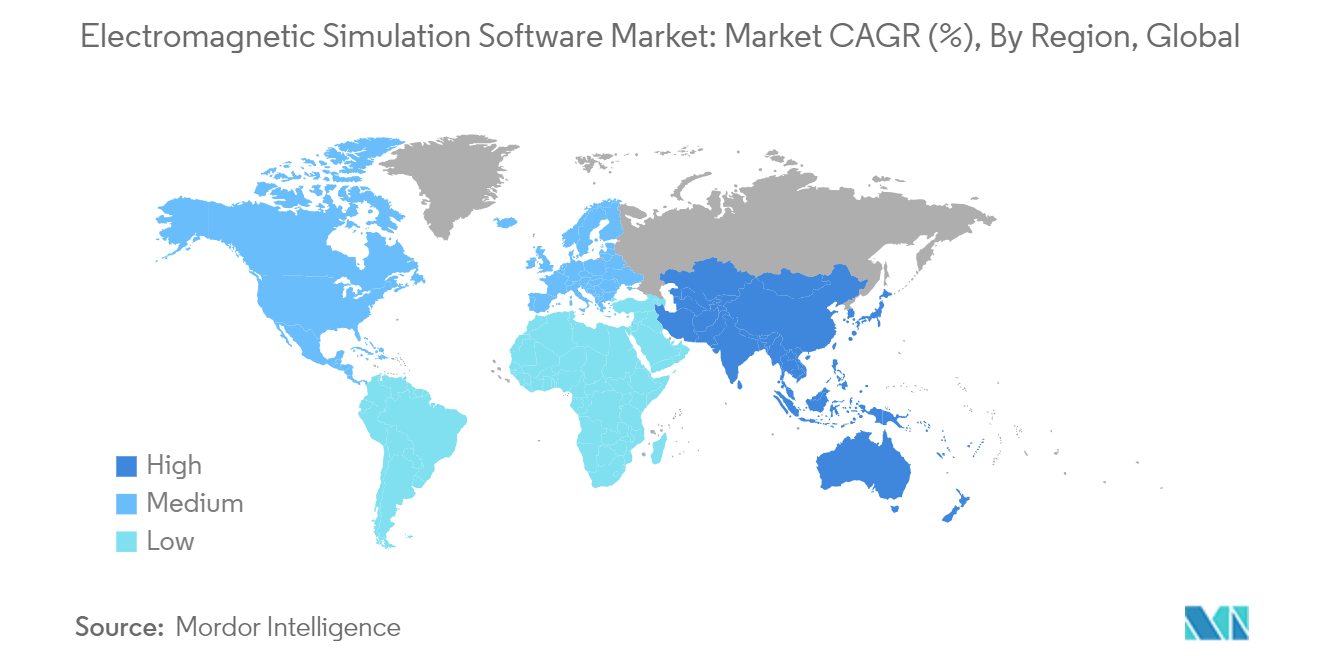Market Trends of Electromagnetic Simulation Software Industry
Telecommunication Sector is Expected to Drive the Market Growth
- The ongoing deployment of LTE and advancements in the field of wireless connectivity technologies, such as general packet radio service (GPRS), Wi-Fi, and worldwide interoperability for microwave access (WiMax) in various fields have boosted the number of connected devices and has led to the growth of electromagnetic simulation software, as they are used to conduct high-fidelity 3-D EM simulations, analyze geometric-scale variations, perform thermomechanical stress analysis, and optimize antenna design.
- The majority of mobile network operators in mature markets are planning to upgrade into 5G in the next few years due to spectrum availability and the sheer time and costs involved in rolling out the next generation of mobile networks. Major players partner with the technology provider to speed up the process and be competitive in the telecom market.
- For instance, in February 2020, Samsung Electronics Co. Ltd collaborated with US Cellular for 5G and 4G LTE network solutions. Through the agreement US Cellular, a key provider of mobile services to millions of customers across the United States, can purchase Samsung’s commercially-proven network solutions, including 5G New Radio (NR) technology, and will extend groundbreaking 4G LTE and 5G technology to its customers base, expanding in consumer and business applications.
- Moreover, electronic companies are focusing on new product development, such as 5G MIMO microstrip antenna, to consider a wide variety of structures to meet the often-conflicting needs for different applications. For instance, in February 2020, Fractus Antennas launched a new multi-band 5G and cellular IoT antenna booster as tiny as a rice grain. It provides global connectivity and solves the common challenge of size as it is of only 7.0 mm x 3.0 mm x 1.0 mm in size. A single antenna can cover 2G, 3G, 4G, and 5G frequency bands from 824 MHz to 5 GHz. More advancement in the antenna design will propel the simulation software market significantly.

North America to Hold a Significant Market Share
- North America is considered to be one of the most advanced markets for mobile communications and MIMO technology in the world. According to the GSMA, the number of unique mobile subscribers in the United States was 281 million in 2019 and is expected to increase by up to 297 million by 2025.
- In the United States, major players, such as AT&T, Verizon, T-Mobile, and Sprint, account for nearly 95% of all subscriptions. With most of the firms making significant investments in 5G technology, MIMO's usage is expected to witness a surged rate of adoption in this region during the forecast period, thereby driving the market.
- Owing to such developments, the multiple input multiple output technologies in the North American region are expected to showcase a prominent position in the foreseen period. Adding to the scenario, Galtronics USA, a subsidiary of Baylin Technologies, has introduced a six-foot, 12-Port base station (macro) antenna for major North American carriers. The base station antenna supports all of the North American mid-band frequencies on eight of its ports and true 4×4 MIMO on the existing Cellular 850 band, LTE 700 band, and the new 600 MHz band.
- Smartphones, tablets, and AI-assisted electronics are experiencing high growth in the region. This is expected to influence the growth of the market in the region. According to the US Consumer Technology Sales and Forecast study conducted by the Consumer Technology Association (CTA), the revenue generated by smartphones was valued at USD 79.1 billion and USD 77.5 billion in 2018 and 2019, respectively. Canada is also one of the largest producers of consumer electronics in the world.
- The region's automotive sector is expected to offer significant opportunities to the market. With changing dynamics in the industry, automotive manufacturers are moving toward electric vehicles to meet next-generation consumers' needs.
- However, automakers in the United States have faced increased pressure to shut down their factories owing to the COVID-19 pandemic. After the federal, state, and local governments started recommending people stay in their homes as much as possible. This has caused supply chain disruptions across various industries.


